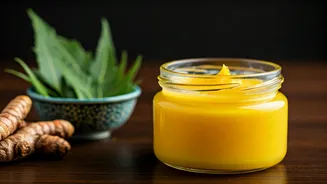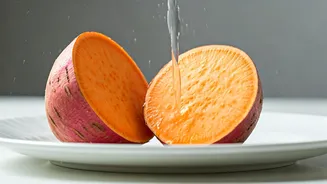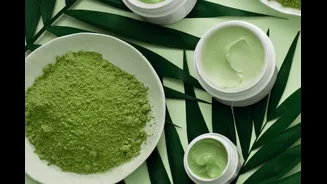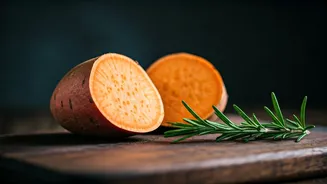The Ghee Advantage
The popularity of homemade ghee cream as a skincare solution stems from its composition and the perspective of proponents like the celebrity macrobiotic
coach. Ghee, clarified butter, is rich in essential fatty acids, antioxidants, and vitamins A, D, E, and K. These components help hydrate the skin, reduce inflammation, and protect against environmental damage. The coach emphasizes ghee's natural properties, highlighting its ability to nourish the skin deeply without the potential harsh chemicals often found in store-bought products. Unlike many commercial moisturizers that contain preservatives, emulsifiers, and synthetic fragrances, ghee is a natural alternative that many find gentler and more effective. Furthermore, ghee is readily available and can be made at home, giving individuals control over the ingredients used and reducing the risk of allergic reactions or irritation.
Store-Bought Alternatives
While store-bought moisturizers are readily accessible and offer convenience, the macrobiotic coach and many others raise valid concerns about their formulations. Many commercial products include ingredients like parabens, phthalates, and artificial fragrances, which may cause skin irritation or allergic reactions. Although some store-bought products are formulated to offer immediate results, these benefits often come at the expense of long-term skin health. They might contain thickeners and emollients that can clog pores or create a barrier that prevents the skin from breathing and functioning naturally. The coach's viewpoint centers on a holistic approach that prioritizes natural, nourishing ingredients. This contrasts sharply with the quick-fix approach many commercial moisturizers offer. Thus, making an informed choice is important.
Making Ghee Cream
Creating ghee cream at home is a simple process, making it an accessible skincare choice. The foundation of this cream begins with ghee, the clarified butter. Melt the ghee gently until it liquefies. The resulting pure, golden liquid becomes the base. To enhance the cream's properties, some people often combine ghee with other natural ingredients. Popular additions include coconut oil for its moisturizing properties, essential oils like rosehip or lavender for their soothing effects, and honey for its antibacterial qualities and added moisture. These ingredients are incorporated into the melted ghee and allowed to cool, often incorporating other ingredients for specific needs. The resulting cream can be stored at room temperature and used daily, and gives control over ingredients.
Ghee's Skin Benefits
The benefits of ghee cream extend to its anti-inflammatory properties, a critical factor for many skin conditions. Its fatty acids and antioxidants combat free radicals, which protect the skin from aging and environmental damage. The natural richness of ghee provides intense hydration, which can alleviate dryness and improve skin elasticity. Regular use of ghee cream can lead to softer, smoother, and more radiant skin, with a noticeable improvement in skin texture. By avoiding harsh chemicals, the skin can heal itself and maintain its natural balance, resulting in a healthy glow. Overall, using ghee cream promotes a natural, simple way to care for your skin.
Making Informed Choices
The final decision to use homemade ghee cream or store-bought moisturizers depends on personal needs and preferences. The celebrity macrobiotic coach champions ghee cream for its natural composition and its benefits. It's a method that is simple and personalized. Individuals should research ingredients and understand the potential impact of those in commercial products. If someone seeks a natural, affordable, and effective skincare option, homemade ghee cream presents a strong argument. However, store-bought moisturizers are easily available. The best approach is to carefully consider the ingredients, potential benefits, and your own skin sensitivities. With informed choices, one can cultivate a skincare routine that supports healthy and radiant skin.












